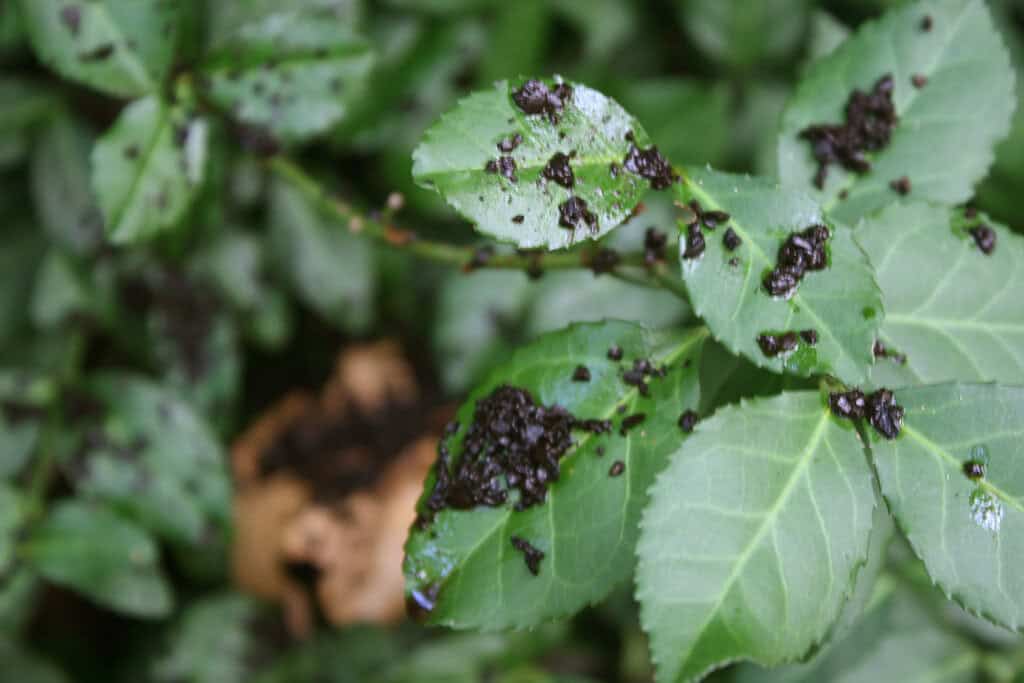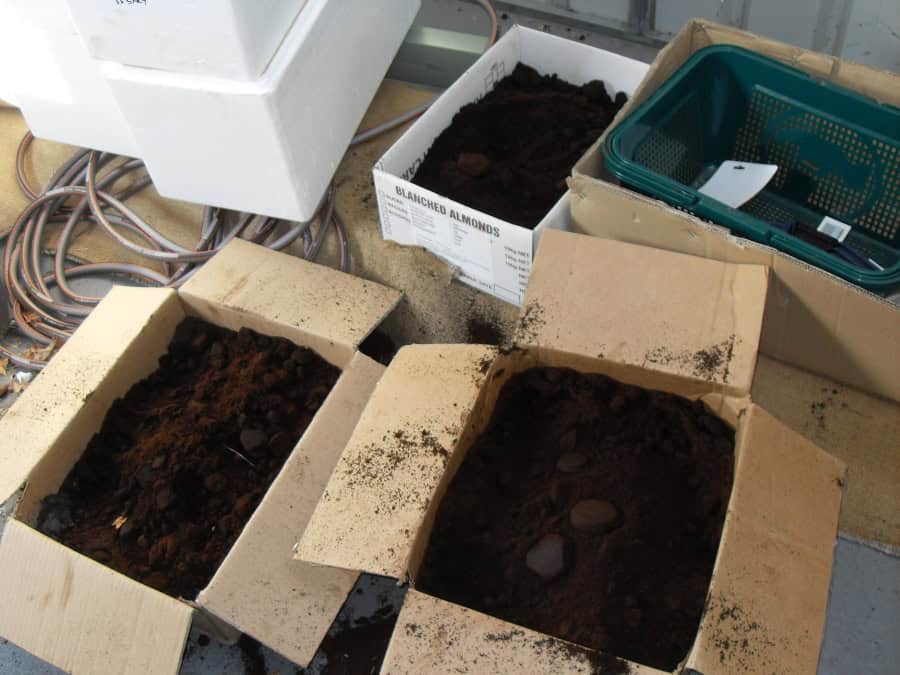Jump to:
Using coffee as a plant fertiliser sounds clever and green. Some swear by sprinkling used grounds in the garden; others pour leftover brews straight into the soil. One cup won’t fit all, though, and results will vary depending on the plant.
Let’s break down what works and what doesn’t, as well as answer a couple of ‘coffee for greenhouse plants’ related questions to see if it’s worth doing.
What’s in Coffee That Might Benefit Plants?

Coffee contains several compounds that can affect plant growth. The two most common forms used in gardening are brewed coffee and used coffee grounds. Some also consider instant coffee granules, but they work differently.
Brewed coffee (liquid)
When diluted and cooled, black coffee contains small amounts of nitrogen, magnesium, and other trace minerals. It’s also mildly acidic (usually between pH 4.5 and 6), useful for acid-loving plants. Yet, the nutrient content is low, so while it can act as a mild liquid feed, it shouldn’t replace proper fertiliser.
Caffeine content varies depending on how strong the coffee is. Studies have shown that caffeine can inhibit plant growth in some species, so dilution is important.
Used coffee grounds

Once brewed, coffee grounds for plants still contain nitrogen (around 2% by weight). Worried about caffeine affecting your plants? Don’t worry; most of it is gone by this point, so the risk is much lower.
Here’s a trick: Used coffee grounds are better added to compost first than put straight onto the soil. Composting breaks them down and helps release nutrients in a way plants can use more easily.
Don’t use instant coffee granules
Instant coffee is made from brewed coffee that’s been freeze-dried or spray-dried. Even if it says “pure”, the concentration of caffeine is often higher per gram than in used grounds. That’s because it contains additives, like sugar, flavourings, or milk solids.
The absence of an organic structure means it offers little to no soil benefit, overall.
Does Coffee Help Greenhouse Plants?
Coffee and its by-products aren’t miracle growers, but they can offer small benefits, especially if used the right way:
Nitrogen boost (but not enough alone)
The 1 to 2% nitrogen from used coffee grounds is helpful for leafy growth, but not enough to support plants on their own. Experts recommend mixing grounds into compost or soil rather than using them as a standalone feed.
Use alongside other methods
As mentioned, coffee grounds work best when mixed with compost or other fertilisers. On their own, they can top up nitrogen for a while, since soil microbes use it up as they break down the ground. That means if you use too much without mixing, your plants might miss out on the nutrients they need.
Improved soil if you don’t overdo it
Grounds add organic matter that helps soil structure, improving moisture retention and aeration as microbes and earthworms incorporate it. However, this benefit is gradual and only noticeable over time.
Another study found that adding about 10 kg of spent grounds per square metre can suppress weeds initially and later improve soil. Though it must be mixed with manure or compost to avoid negative effects.
Can Coffee Be Used in a Greenhouse?

(Image Credit: Wikimedia Commons)
Yes, but it needs to be done in moderation.
Greenhouses trap humidity, so coffee grounds can go mouldy if applied directly, especially in thick layers. Hence, it’s a good idea to compost them first.
Cooled, diluted coffee can occasionally be used as a mild feed, but go easy on it. Stick to low concentrations and avoid pouring it near young or sensitive plants.
Coffee for Greenhouse Plants List
Acid-loving plants
These thrive with a mild nitrogen and organic matter boost from coffee grounds:
- Blueberries, azaleas, rhododendrons, hydrangeas (especially for bluer blooms)
- Tomatoes (in moderation)
- Camellias, gardenias, and African violets
Plants to avoid
- Sensitive seedlings and young plants
- Alkaline-loving species, such as lavender, rosemary, and many succulents
Round-up
Coffee for greenhouse plants, or plants in general, can be worthwhile when done right. But keep in mind that this isn’t a quick fix-all, so don’t rely on this method alone. Instead, repurpose the used grounds from your daily brew to supplement your routine. It can save you money, too, with the bonus of a healthier garden.





